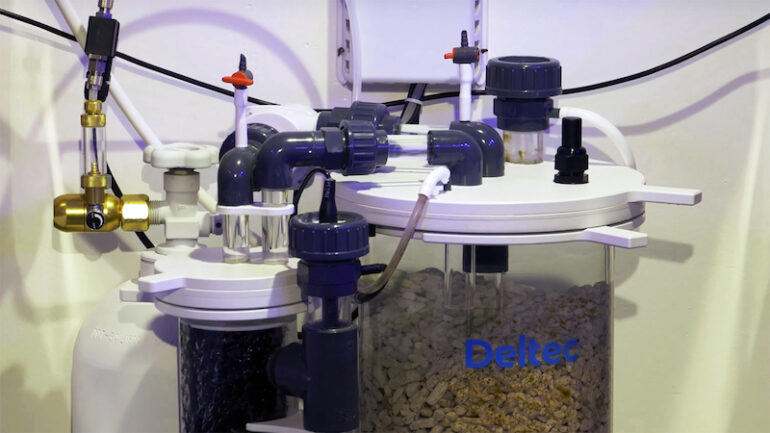The CR Twin Tech is one of the most ambitious new calcium reactor designs we’ve seen in nearly ten years. Created by Deltec this new version of the automatic calcium reactor concept is the epitome of the kitchen sink approach to creating a sophisticated product like this.
When first looking at a CR Twin Tech on a table or fresh out of the box, the abundance of cables and hoses can seem rather daunting but the mission of the Twin Tech becomes more clear once set up and running. We’ve been using the Deltec CR Twin Tech 3000 as our primary mode of mineral replenishment for a 400 gallon mixed coral aquarium system and it’s turned out the be the ‘Cadillac’ of calcium reactors, running flawlessly without intervention for over eight months.
Indeed the streamlining and automation of calcium reactor performance is precisely the goal of Deltec’s CR Twin Tech but often times, ambitious devices like this have a track record of reaching for the stars and getting burned by the sun. However in our experience the Twin Tech has worked so smoothly and needed zero user adjustments to maintain a constant output of calcium and carbonate rich effluent that it has transformed our perception of what a calcium reactor can be.
With its extensive feature set the CR Twin Tech does price out to be a premium calcium reactor and you could get by with decent calcium reactors for substantially less greenbacks. However for highly demanding applications, especially commercial aquaculture of stony corals in very large volumes of water, the reliable aragonite dissolution performance of the CR Twin Tech and minimal user adjustment makes the new Deltec CR Twin Tech calcium reactor a very high value proposition.
Check out the video above to see our full review of this new automatic calcium reactor model from Deltec which we are eager to crank up even higher, and even look forward to investing in additional units since this one has been such a reliable calcium and alkalinity machine for the Reef Builders Studio. [Deltec]



